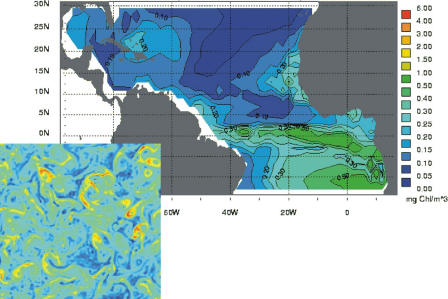Figure 3. Phytoplankton Biomass Generated with a Coupled Biological–Physical Model Developed to Examine the Impact of Nitrogen Fixation in the Atlantic Ocean.
In this large simulation [24], the ecosystem model consists of six variables and includes two different functional groups within the phytoplankton, for nitrogen and non-nitrogen fixers. The physical model includes 19 vertical layers but only a coarse horizontal resolution (2° × 2°). In particular, it does not resolve the mesoscale variability of the flows, at characteristic scales of 1 to 100 km, known as the “weather” of the ocean. The lower left panel illustrates the variability of phytoplankton at these smaller turbulent scales, with a simulation of a coupled ecosystem–eddy model (K. Boushaba, G. Flierl, and M. Pascual, unpublished data). We can ask how the effects of these smaller scales can be incorporated in models with a coarser resolution for larger oceanic regions. Even more fundamentally, what are the relevant spatial scales of coupling?

